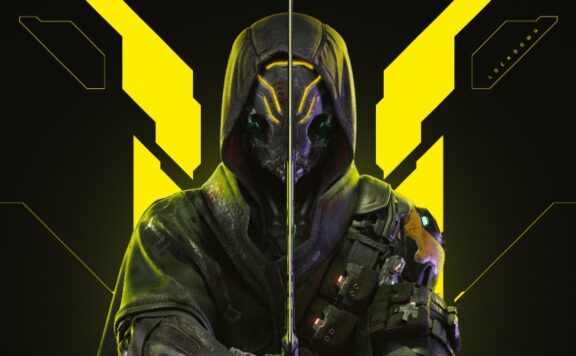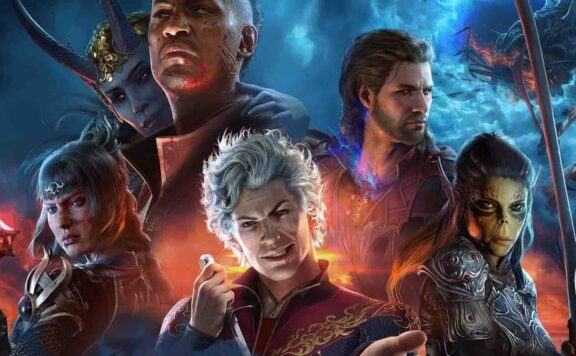Pillars of Eternity is a traditional RPG. This means that it is made in the style of older RPGs like Baldur’s Gate and The Temple of Elemental Evil, though it uses its own rule-set rather than sticking with Dungeons and Dragons. There’s definitely some nostalgia to seeing such an old school RPG, but it also gets in its own way a bit.
You begin the game – after creating your character – in a camp with a variety of people, only for them to be taken by bandits almost immediately. You then stumble on some shady types in a ruin just moments before they trigger some large magical machinery that knocks you out for a while. Once you wake up, you are able to see and interact with souls. You will soon learn that your character is now a Watcher, someone who can speak to and interact with souls which, in this game, are an actual thing that enters a body upon birth and leaves when it dies, slowly deteriorating as it goes.
This is the beginning of your adventure in Eora, a large, richly detailed world of magic and the like. The world is incredibly in-depth with enough history to fill a small library. Most of its inhabitants are enveloped in shades of grey, just waiting for you to wade in and start deciding things. Animancers, for example, study souls using machinery and human experimentation, sometimes even capturing them as they leave the body on death. Would your character consider this human experimentation necessary to stop the epidemic of children born without souls, or is it an overreach from a group of people who are playing with forces they know nothing about, causing unnecessary pain to their patients?
Role playing in Eora is easy because of things like this. An idea of your character’s personality will help you navigate through the wealth of options you will be presented with along the way. XP is earned from completing quests and discovering places, so peaceful solutions are entirely viable. As you work through the game, your character will develop a personality based on your decisions, which will affect how others view you. These decisions are often hard to make and mature in theme, often found in side quests that occasionally outdo the main quest in other RPGs that continually surprises you. Of course, with great writing, comes great reading, and Pillars is far from an exception. If you can’t stand reading in games then you should stay well away from Pillars of Eternity.
Character creation and customisation is similarly deep, with six races and eleven classes to choose from you’d be hard pressed not to find something that works for you. From RPG staples like axe-wielding dwarves to PoE creations like Godlike Ciphers, there are a lot of options to choose from. It took me an hour to create my character. Some classes have mechanics entirely to themselves. Chanters, for example, cast spells by chanting sacred verses, beginning as soon as combat starts. Once you have sung enough phrases you can use an invocation, which is a powerful spell that can summon creatures, attack, or debuff enemies.

These are far from the only additions to the classic RPG makeup. An enchanting system, an upgradable fortress to call home, and, crucially, it doesn’t use D&D rules. PoE’s rules are its own, created for the game, and it’s similar enough to D&D to feel familiar but different enough to feel fresh. Stats feel more important, as any class, or any race, will get an advantage rather than there being a selection of superfluous options that varies from class to class.
Even base mechanics have their differences, such as health points, which are split into Endurance and Health. The former is short term damage that can be healed easily with spells/potions, whereas the latter is more permanent and harder to heal, using rests to do so. If you run out of endurance, you are knocked out, if you run out of health, you die. Characters can be permanently lost, so regular saves and great care should be taken.
Combat is in real time, but can be paused to issue orders, then resumed to see them play out. It basically becomes a pseudo turn-based system that will be familiar to fans of the genre. It even features the classic radial menu. As with all RPGs of this ilk on console, the controller is the real issue here as it can feel awkward and finicky when switching to cursor mode which is necessary for combat, lacking accuracy and buttons compared to a mouse/keyboard combo. This issue continues into the menus as well, where inventory management can be a bit of a pain.
The main issues with Pillars of Eternity are in fact due to its traditional part. It feels like an homage to games like Baldur’s Gate, which would be fine, but it maintains the issues that were present in that now 19 year old game. It essentially looks the same but in HD, and while very well drawn, it’s ultimately like games that are two decades old. If there are a lot of characters fighting at once at melee range it can become difficult to distinguish between and target them, particularly if there’s a lot of magic flying around as well, even while zoomed in and even with colourblind mode on (because I am).

Each area you go to has its own loading screen as well, and they are all too long. This includes moving upstairs in any tiny building you just walked into, meaning you were outside, loading screen, a minute looking around this room before going to the stairs, loading screen, then in reverse on the way back out. Nothing kills momentum more than four long loading screens in the space of five minutes, only one to two minutes of which were gameplay. I found myself skipping buildings simply because I didn’t want to sit through six loading screens.
What’s Good:
- Very deep mechanically
- Lots of options, all the time
- Huge, fascinating world with tonnes of well written history
- Good music
- Well crafted environments
What’s Bad:
- Clunky controls
- Difficult to distinguish between characters and enemies during fights
- Too many loading screens
- Tonnes of reading
Ultimately, Pillars of Eternity is a stellar entry into its genre, but one that won’t win over people who are not already fans. It is huge and richly detailed, with more history than some actual periods of real life, and a rare amount of care and attention. It’s probably a better experience on a PC, but it’s still definitely worth playing on console if it’s your only option.
Score: 8/10
Version Tested: PlayStation 4





matthangzhou
I keep getting redirected to a spammy google competition website. Not sure if it’s your site or my phone?
matthangzhou
Happened 4 times. Will have to try and read the rest of the review later as the game sounds up my street!
Stefan L
Apologies. We’ll try and crack down on those for you.